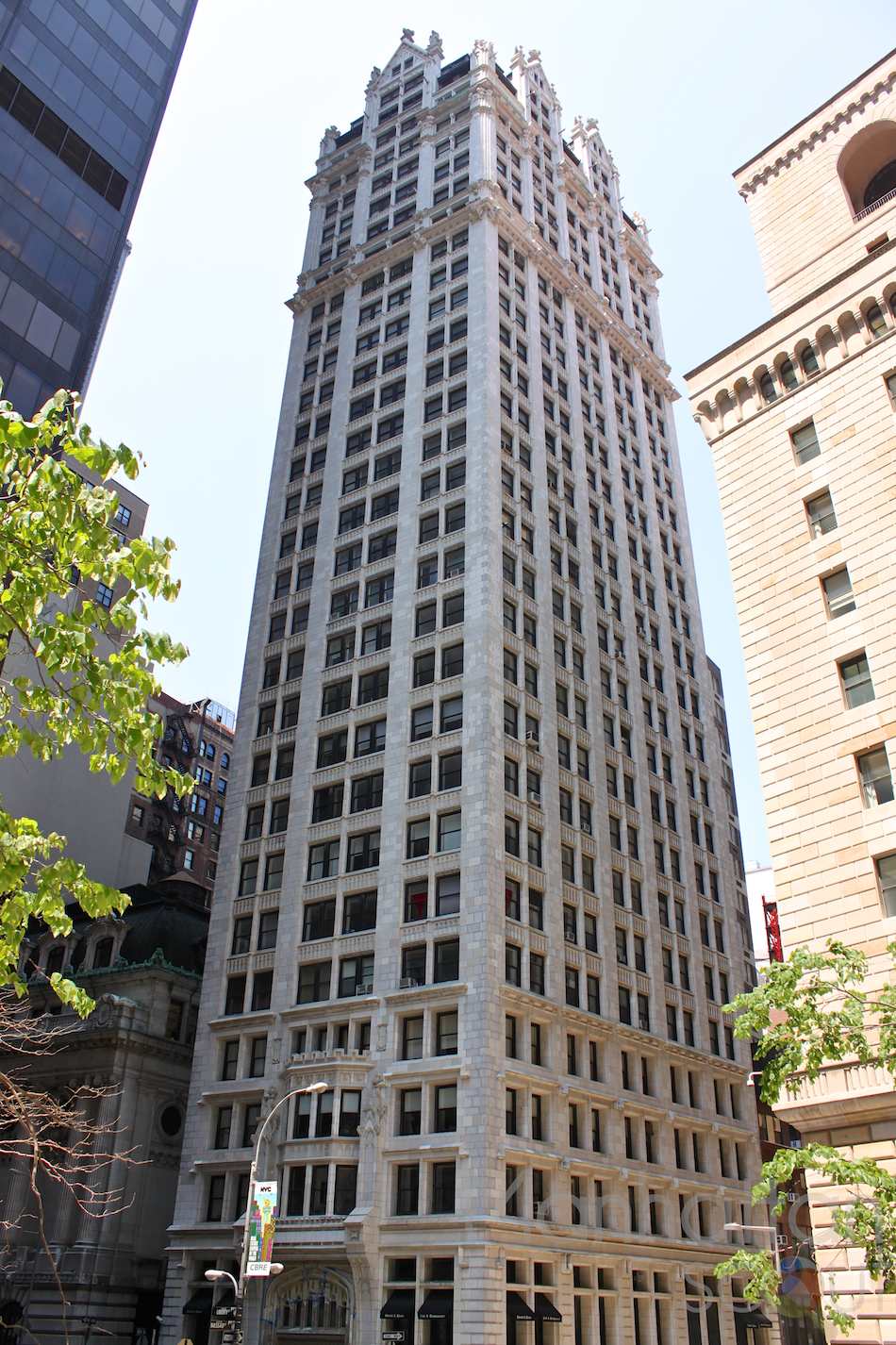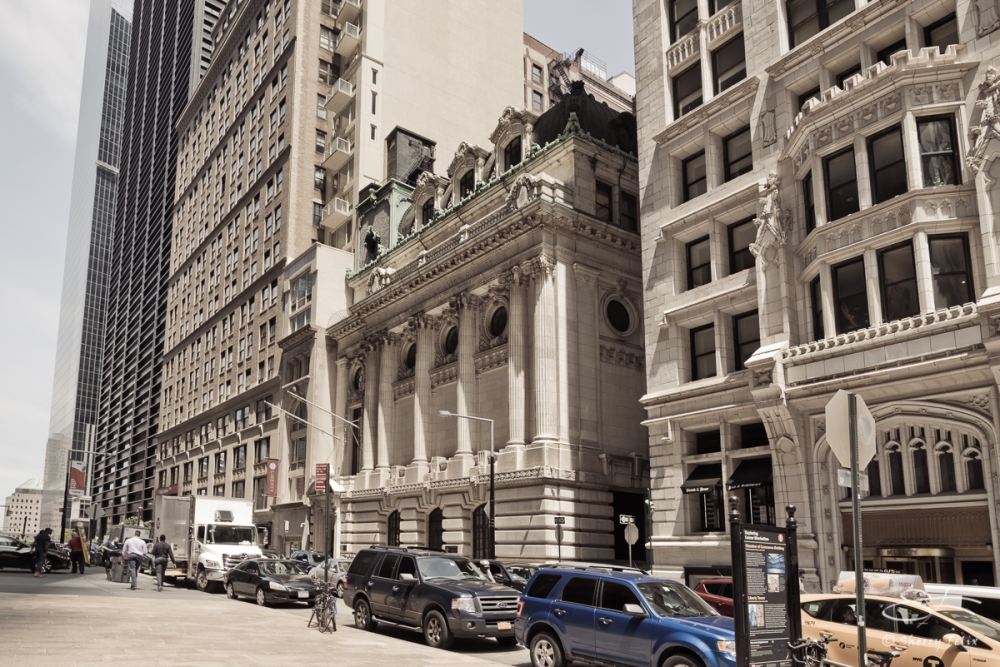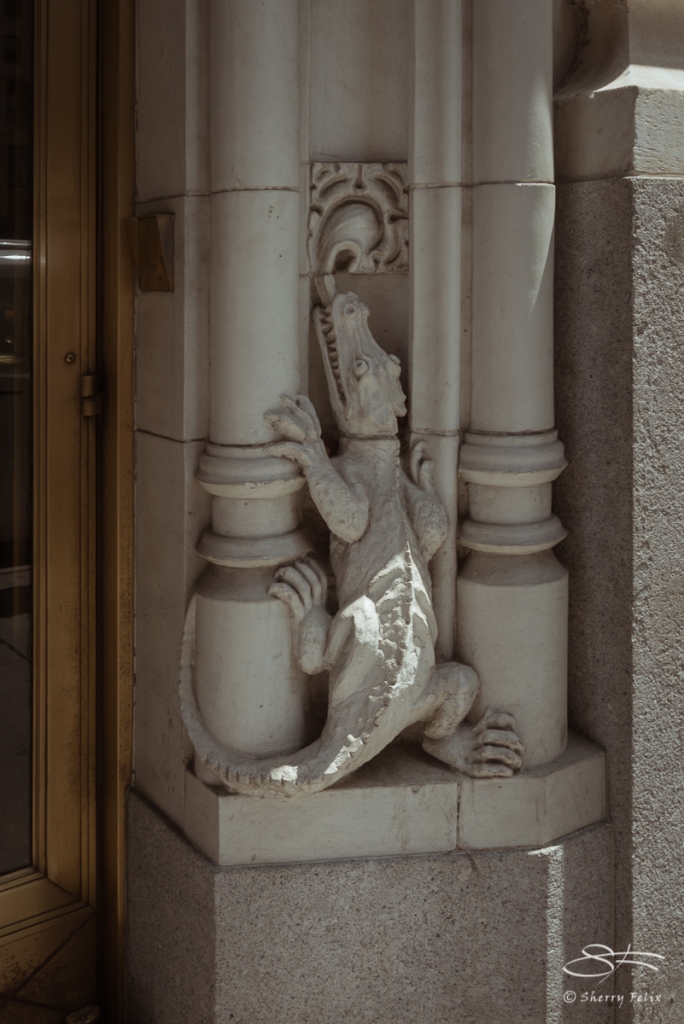The Liberty Tower, formerly the Sinclair Oil Building, 55 Liberty Street at the corner of Nassau Street in the Financial District of Manhattan, New York City was built in 1909–10 and designed by Henry Ives Cobb in a Gothic Revival style. The limestone building is covered in white architectural terracotta ornamented with birds and alligators and other fanciful subjects.
In the building before Liberty Tower was the New York Evening Post under editor William Cullen Bryant, and the first headquarters of the American Society for the Prevention of Cruelty to Animals, established by Henry Bergh in 1867.
President Theodore Roosevelt’s law office was one of Sinclair Oil building’s first commercial tenants. In 1917, an office was leased as cover for German spies seeking to prevent America’s intervention in World War I (“The Great War”). The plot involved an attempt to draw the United States into a diversionary war with Mexico and Japan. The plot was exposed on March 1, 1917, with news reports of an intercepted telegram (“Zimmermann Telegram”), decoded by British cryptographers, prompted President Woodrow Wilson to declare war against Germany a month later. Shortly afterward, the entire building was leased by the Sinclair Oil Company, responsible for the Teapot Dome scandal of 1922.
In 1979, the structure, renamed Liberty Tower, was converted from commercial use into a residential building by architect Joseph Pell Lombardi. It was designated a New York City landmark in 1982, and was added to the National Register of Historic Places on September 15, 1983. Because the then new principles of “skyscraper” design were not yet fully understood, the building was overbuilt, with its steel foundation anchored into bedrock five stories below street level. This overly sturdy construction helped this tall, slender building withstand the collapse of two World Trade Towers only 220 yards to the west on September 11, 2001, with only minimal damage despite the impact which was measured at the time as a 3.3 magnitude seismic event.
Source: Liberty Tower (Manhattan) – Wikipedia

View showing the ornate top. Image source: Manhattan Scout





Most intrtiguing look at a fascinating building – with the amazing history. Thanks for the wonderful photos and background. This is one building I will eventually visit. M 🙂
LikeLiked by 1 person
Glad you enjoyed it.
LikeLike
That is some gorgeous architecture. And you images captures its grandness and elegance beautifully.
LikeLike
Thanks Otto
LikeLiked by 1 person
thank you for the history as well as the fabulous images (as always)!
LikeLike
Thanks Cybele
LikeLiked by 1 person
🙂
LikeLike
Love the details. For some reason, I found the history even more interesting than usual. 🙂
janet
LikeLike
Beautiful building, so warm and regal. Such pedigreed occupants! No doubt its history is even richer in detail than what we know. Excellent choice.
LikeLike
Thanks Joey 😊
LikeLiked by 1 person
Great images and thanks for the history lesson.
LikeLike
your welcome
LikeLike
A lot of old tall buildings have lots of ornamentation at the top. I don’t know who for–the birds?
LikeLike
What fun to look up and see all that detail at the top. Gorgeous.
LikeLiked by 1 person
Interesting post and wonderful photos!
LikeLike
Thanks a lot.
LikeLiked by 1 person
Very beautiful! Love the alligator adornment 🐊
Thank you for the history, very interesting!
LikeLike
Glad you enjoyed it.
LikeLiked by 1 person
I don’t usually like skyscrapers, Sherry, but this one is lovely, with it’s ornamented birds and alligators. A beautiful design.
LikeLiked by 1 person
Thanks. I love the old ones. The new steal and glass skyscrapers are cold and soulless.
LikeLiked by 2 people
Wow, that is a gorgeous building. The history of the place is just fascinating. It’s interesting to think that there was a time when “overbuilding” was quite common.
Good post Sherry 🙂
LikeLike
What a beautiful subject with such a rich history. I enjoyed reading about the Teapot Dome scandal. I have not yet learned why the rock formation became known as Teapot Dome!
LikeLike
Thanks. Easy to find out why Teapot Dome: https://en.wikipedia.org/wiki/Teapot_Rock …its shape.
LikeLike